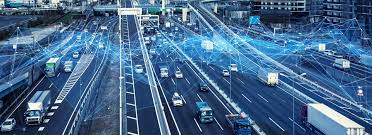Today, the quality of the shopping experience that companies are able to offer their customers is almost more important than the product itself.
It is not something that concerns only the sale, however, but a 360 ° journey that includes each of the touchpoints encountered during the customer journey , including customer service and interaction with the brand.
Never before has the customer experience been a key element within marketing strategies , so much so that even the organization, business processes and assistance revolve around the customer and his experience with the brand.
Designing and creating a quality customer experience from the choice of product or service, to the purchase, to the omnichannel relationships up to the resolution of problems, certainly requires investments, but the economic benefits that can be obtained far outweigh the costs.
In fact, customer satisfaction reduces the cart abandonment rate and increases word of mouth , two factors that significantly reduce KPIs such as the cost of acquiring a single customer and that of retention.
In this context, if they want to survive in the digital age, it becomes essential for companies to renew their business model and move towards digital logistics.
But how can logistics 4.0 improve the customer experience? Let's find out below!
Internet of Things and digital transformation at the service of the customer
The integration of innovation, digital transformation and customer experience offers an excellent opportunity for growth compared to its competitors.
The benefits, according to a survey conducted by PTC and Corporate Leaders, concern several aspects: better operational efficiency (40%), faster time-to-market (36%) and the ability to better satisfy customers (35%) ).
When we talk about digital transformation in logistics , we refer to the process of integrating new digital technologies in areas such as storage, order management or transport.
Thanks to the use of enabling technologies of digital logistics , companies today are able to automate some activities by limiting human error, collect and transmit data through intelligent objects and obtain full product traceability for the benefit of customers.
In particular, the introduction of smart devices connected to the Internet via the IoT make it possible to optimize the supply chain by increasing the value perceived by end customers thanks to continuous monitoring and consequent traceability of the various orders.
Knowing where the goods are in real time is a prerequisite for buyers.
The positioning of IoT sensors along the entire supply chain and in transport vehicles is particularly useful for knowing the positioning of the product in real time, thus guaranteeing a clear improvement of the customer experience.
Furthermore, the use of sensors linked to the Internet of Things also allows to optimize the functioning of the warehouse.
Real-time monitoring, in fact, allows automatic inventory management that makes it possible to place new orders for goods and materials only when it is actually necessary.
Furthermore, thanks to the ability of smart objects to self-manage, adapt to circumstances and exchange information relating to the environment with other smart devices, it is possible to guarantee correct maintenance, perfect storage of goods and the precise location of a product.
This last feature makes the IoT a perfect technology to limit picking errors , which in addition to being a cost for the company, represent an inconvenience for the end user who must return and send back the goods.
Thanks to the sensors and the special smart labels assigned according to the size of the packaging or of the package of each product, it is possible to prevent oversights, inaccuracies and human errors during the operations of picking the goods from the shelves.
The advantages linked to the Internet of Things are also evident from a marketing point of view: manufacturing companies can use the connectivity of objects to enrich communication with customers.
Every day, in fact, numerous behavioral and aptitude data are produced and made available to companies : an unparalleled resource for knowing in detail the interests of its users.
Knowing how they behave, what they need and how they look for it are elements that allow you to build personalized experiences for each of them.
For example, the marketing team can create messages for each customer by suggesting specific products or complementary services on the basis of the data.
People today are exposed to countless messages, newsletters and advertising campaigns and are less and less tolerant of impersonal and generic offers.
A data-based marketing strategy is able to increase the customer experience precisely because it is tailored to meet the needs of that specific person.
The flow of data made available by the IoT can even allow products to be marketed at the exact moment in which customers request them.
Those who manage an eCommerce, for example, could consider the possibility of making instant offers, or perhaps ad hoc discounts, which may have a better chance of winning.
How digital logistics improves the customer experience
Not only the Internet of Things, but also Artificial Intelligence and latest generation software can help companies communicate better with their customers, predict the delivery times and conditions of goods and better manage their packaging and inventory.
But in concrete what are the advantages that digital logistics and the technologies connected to it bring to customer service and more generally to the customer experience?
Let's see them in detail.
Optimize your processes
Companies that can boast good internal communication, collaboration and simplification of processes and procedures are better able to manage customer requests.
Having the possibility of being able to control the fleet, the movement of goods, storage and inventory control at any time plays a fundamental role in guaranteeing a quality customer experience.
Thanks to the digitization of information and software capable of sharing information relating to the various orders , the customer service is able to respond in a precise and timely manner to any request from customers.
Furthermore, data analysis allows management to anticipate demand and better manage internal operations.
This makes it easier to optimize inventory, manage staff and schedule deliveries based on weather and traffic conditions.
Improve supply chain visibility
In a market that is constantly evolving and increasingly attentive to quality and transparency, end-to-end visibility on the supply chain requires solutions capable of analyzing the data generated by the various devices and tracking methods.
It is no longer sufficient to have information relating only to a specific phase, but it is necessary to have an overview of the entire process: storage, entry and exit of the goods, transport and delivery, even better if integrated into the supply chain with all the actors involved.
Digital logistics makes it possible to exploit software and innovations capable of offering real-time information relating, for example, to the position of the vehicles, the temperature and any malfunctions.
These tools are even more important for companies operating in the food sector and need to always guarantee compliance with food safety, as well as to track products and know the performance of the various processes at all times.
Sensors and IoT devices are particularly useful for this purpose as they allow you to monitor and transfer data on the position of a vehicle or item in real time.
As a result, customers are always informed about the exact location of the vehicles, the temperature, the weather or traffic conditions and this reassures them that their order will be delivered on time and in the best possible way.
It offers access to countless data
Delayed deliveries, half-loaded trucks or even empty ones on return journeys are just some of the results of incorrect planning and forecasting.
Thanks to Big Data and their correct analysis, it is possible for management to make targeted and informed decisions while minimizing risks.
As we have seen, people's expectations on delivery times and methods are increasingly high, so much so that today it is not uncommon to find yourself managing shipments in 24 hours, especially if you work in the B2C eCommerce sector.
Having the ability to analyze historical travel data allows companies to solve the dual problem of forecasting demand and more efficient planning of deliveries.
Increase efficiency with automation
Latest generation technologies of logistics 4.0 such as automation, AI and Internet of Things are valid allies for companies that intend to increase the satisfaction and loyalty of their customers.
In fact, being able to anticipate user needs improves the customer experience and decreases support requests.
At the warehouse level, automation improves productivity, minimizes the risk of errors, helps cope with peaks in activity and reduces the burden of tasks for operators by eliminating some of the low value-added operations.
But customer service also benefits from automation as the Internet of Things can be used to identify trends and facilitate the automation of recurring problem solving processes.
In this way, in addition to having greater control over the preparation of orders and the goods leaving the warehouse, it is also possible to optimize customer service.
By alerting and informing users of any problem in advance and providing ad hoc solutions, the number of people who turn to customer service is considerably reduced, thus increasing its efficiency.
Furthermore, to ensure customer satisfaction, more and more companies are deciding to resort to tools such as chatbots that take advantage of artificial intelligence.
This solution allows you to speed up interactions, route different cases and provide immediate and automatic solutions to the most common problems.
Should the intervention of an operator be necessary, the work would still be smoother as it would already have a partial view of the information provided and received by the chatbot.
Why invest in the customer experience
The need to move towards a digital transformation path does not only concern logistics operators, but all companies.
In addition to the optimization of the various processes, the customer experience must be the basis of this process , otherwise the investments and efforts made will be useless.
Digital logistics allows to considerably improve the customer experience as it allows companies to respond quickly and efficiently and in a personalized way to the various requests and needs of customers.
Thanks to IoT and AI it is possible to minimize requests for assistance, optimize processes, increase traceability and improve visibility and information exchange throughout the supply chain.
The result will be an increase in the level of customer satisfaction and a strong bond with the company that easily turns into a competitive advantage .
If until yesterday price and product characteristics were the only two criteria taken into consideration in choosing a brand, today what makes the difference is the experience lived by users throughout the customer journey .




COMMENTS (0)